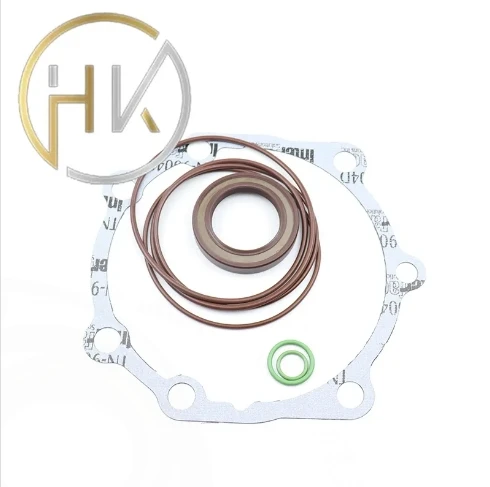Dec . 12, 2024 09:54 Back to list
hub grease seal
Understanding Hub Grease Seals Function, Importance, and Maintenance
In the world of automotive and machinery components, hub grease seals play a critical role in ensuring efficiency, performance, and longevity. These small yet essential parts serve as barriers that help retain lubrication within the hub assembly while preventing contaminants from entering. This article delves into the function, importance, and best practices for maintaining hub grease seals, ensuring optimal operation of your vehicle or machinery.
Function of Hub Grease Seals
Hub grease seals are specifically designed to keep grease in and dirt out of the wheel hubs, axles, and other rotating assemblies. They typically consist of a rubber or synthetic material ring that fits snugly against the rotating shaft. The inner edge of the seal is often lubricated to maintain flexibility and create a hermetic seal, while the outer edge typically makes contact with the hub.
When a vehicle operates, heat generated by friction can lead to the breakdown of lubrication. The grease seal's primary function is to contain this lubricant, ensuring that friction surfaces remain lubricated and perform optimally. By preventing the ingress of dirt, moisture, and other contaminants, grease seals play a pivotal role in reducing wear and tear, thereby prolonging the lifespan of the components they protect.
Importance of Hub Grease Seals
The importance of hub grease seals cannot be overstated. A failing or damaged grease seal can lead to catastrophic consequences for any mechanical assembly. Some of the key reasons why these seals are crucial include
1. Lubrication Retention By containing grease within the hub, grease seals ensure that critical moving parts remain lubricated, minimizing friction and overheating.
2. Preventing Contaminants Grease seals act as formidable barriers against dirt, dust, moisture, and other foreign particles that could interfere with the smooth operation of mechanical components, which could otherwise lead to corrosion or mechanical failure.
3. Enhancing Performance Efficient sealing allows for smoother operation, which translates into improved overall performance of the machinery or vehicle while also enhancing fuel efficiency and reducing energy consumption.
4. Cost-Effectiveness By prolonging the lifespan of the components they protect, hub grease seals can reduce the frequency of repairs and replacements, ultimately leading to lower maintenance costs.
Signs of a Failing Hub Grease Seal
Recognizing the signs of a failing hub grease seal is crucial for maintaining optimal performance
. Common indicators includehub grease seal

- Visible Grease Leakage If you notice grease pooling around the wheel hub or axle, it may indicate that the grease seal is compromised.
- Unusual Noises Grinding or whining noises while accelerating or turning could signal that the bearings are no longer adequately lubricated due to a failed seal.
- Overheating Components Excessive heat generated in the wheel hub area can signify that lubrication is escaping or that dirt is contaminating the grease.
- Inconsistent Handling If the vehicle exhibits irregular handling or responsiveness, it may be indicative of issues stemming from compromised grease seals.
Best Practices for Maintenance
To ensure the longevity and effectiveness of hub grease seals, proper maintenance is essential. Here are some best practices
1. Regular Inspections Periodically check for signs of grease leakage or any corrosion around the wheel hubs and axles. An early inspection can prevent minor issues from escalating into significant problems.
2. Use Quality Grease Ensure that the right type and quality of grease are used for lubrication. Consult manufacturer guidelines for specifications.
3. Proper Installation Ensure that hub grease seals are installed correctly. Misalignment or improper fitting can lead to premature seal failure.
4. Replace When Necessary Whenever you service or replace wheel bearings, inspect the grease seals and replace them if there are any signs of wear or damage.
Conclusion
In conclusion, hub grease seals are vital components in machinery and automotive applications, performing the essential task of retaining lubrication while preventing dirt and contaminants from entering. Their proper functioning is key to maintaining the efficiency, performance, and longevity of vehicles and machinery. By understanding their role, remaining vigilant about their condition, and adhering to proper maintenance practices, one can ensure that hub grease seals continue to perform effectively over time.
-
TCN Oil Seal Metal Ring Reinforcement for Heavy Machinery
NewsJul.25,2025
-
Rotary Lip Seal Spring-Loaded Design for High-Speed Applications
NewsJul.25,2025
-
Hydraulic Cylinder Seals Polyurethane Material for High-Impact Jobs
NewsJul.25,2025
-
High Pressure Oil Seal Polyurethane Coating Wear Resistance
NewsJul.25,2025
-
Dust Proof Seal Double Lip Design for Construction Equipment
NewsJul.25,2025
-
Hub Seal Polyurethane Wear Resistance in Agricultural Vehicles
NewsJul.25,2025
-
The Trans-formative Journey of Wheel Hub Oil Seals
NewsJun.06,2025
Products categories
















